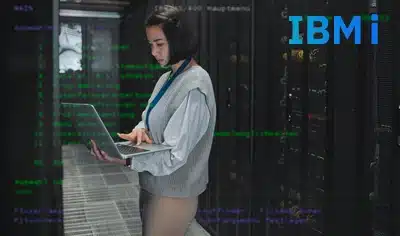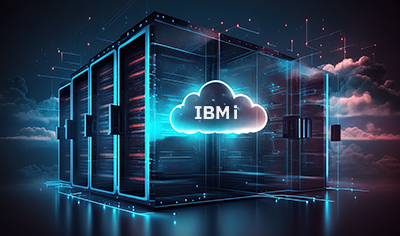Enterprises are today revamping their operating and business models in the digital era, as a host of disruptive technologies fundamentally redefine products and services, as well as consumer experience. To sustain relevance in a cutthroat and dynamic marketplace, companies must boost agility and operational efficiency, beside accelerating innovation and end-to-end product development and rollout.
Given these imperatives, modernizing legacy systems, spanning old applications and infrastructure, has assumed critical importance. With organizations seeking to aggressively leverage the Cloud, mobility, Internet of Things (IoT), open-source frameworks and various other technologies, legacy IT needs a bottoms-up renewal. Many of the existing legacy systems are ill-equipped to deliver the flexibility, scalability, integration and enhanced functionalities that the modern enterprise requires. These systems typically entail high total cost of ownership (TCO), are incompatible with newer technologies, and provision suboptimal end-user experience (UX).
A 2015 survey of Federal IT Managers in America found less than 50% of respondents saying their legacy systems met current requirements, while 62% acknowledged that a failure to modernize the same would adversely impact mission-critical services.
The role of user experience (UX) in legacy modernization
For both end consumers and enterprise users, smooth digital experiences have now become a core expectation with regard to online or mobile applications, thereby making UX a key facet of legacy modernization.
The correlation between the consumer experience associated with an end-user application and the success of a brand is direct and compelling. Unlike in B2C apps, the decision maker and users are different for enterprise apps. Nonetheless, user experience plays a vital role in the success of enterprise app adoption too. In fact, the distinction between the UX-related demands of consumer and business app users is increasingly getting blurred. End users of both apps now expect ease of usability, high performance and consistent experiences across devices.
Optimal user experience has the power to transform businesses in several ways, including strengthening brand trustworthiness, boosting ROI, increasing conversion rates by up to 200% and lowering costs by minimizing post-release issues.
Reaping multiple benefits with legacy revamp
So, how exactly can organizations gain from a modernization of their legacy, monolithic IT architecture? Here are some of the salient benefits a revamp of the traditional, dated applications and infrastructure can deliver:
- Revenue growth: Modernizing existing apps allows organizations to tap into unexplored markets by making their products and services more accessible, scalable and flexible.
- Cost savings: Shifting to contemporary, low-cost modern platforms leads to savings on labor costs, license fees and upgrade overheads that are involved in operating legacy systems. Modernization of old applications drives down TCO by automating code writing and reuse, and optimizing business processes.
- Improved efficiency: Replacing monolithic legacy platforms with modular, language-neutral, event-based applications increases overall efficiency. Moreover, new-age applications can enhance efficiency by facilitating seamless data migration to multifunctional, scalable Cloud platforms and SOA-based systems that drive cloud computing, DevOps and Big Data processing.
- Increased agility and lower dependencies: Upgrading the software underpinning the language-dependent mainframes reduces the reliance on expensive, scarce resources who are skilled in legacy systems. Moreover, the modernization of legacy applications drives increased adoption of open, agile, Web-based systems, thereby ensuring the business is technologically relevant and in alignment with evolving customer expectations.
- Enhanced flexibility and maintenance: Many of the contemporary apps are Cloud-based, eliminating the need for on-premise infrastructure, and providing more mobility in terms of usage and maintenance. Further, round-the-clock remote access can enable hassle-free monitoring of automated processes which are linked to integrated apps that reuse code.
- Better compliance: When organizations provide services that adhere to process-related regulations, they gain competitive advantage. Tracking regulatory changes, maintaining periodic reports and daily logs is cumbersome on paper-based legacy systems. Contemporary applications, in contrast, can foster simplified data capture from mobile devices, encryption-based security and project status monitoring. This paves the way for robust and smooth regulatory compliance, augmented customer service, and better risk management.
- Cross-function alignment: Often, lines of businesses (LOBs) distribute their allocated budgets between customer acquisition and innovation. IT teams, on the other hand, exhaust a majority of their earmarked spend on maintaining legacy systems, with little funds left for pursuing innovation. Modernizing the applications aligns the goals of the LOBs with those of the IT department, by reducing maintenance efforts, enhancing productivity and subsequently generating bandwidth for innovation.
- Simplified integration: Upgrading legacy systems to update with Web-enabled APIs is a modern-day requirement for seamless integration with prospective and existing customers. Application modernization makes the integration easy, cost-efficient and compatible with the technology of new-age customers. Web-based, scalable, modernized applications will help organizations provide superior services and experiences to their vendors and customers. These new-age systems will easily integrate with mobile devices to facilitate online transactions, social media engagement, as well as collection and analytics of public and private data that can provide consumer insights.
Conclusion
Modernizing legacy IT for the digital era is no longer an option. Every organization, irrespective of the business it is in, must urgently devise a roadmap for upgrading its legacy setups, in order to successfully orchestrate digital transformation and reap improved business outcomes. Those who choose to remain stagnant will simply be left redundant.






